No products in the basket.
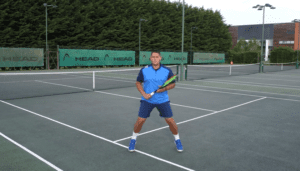
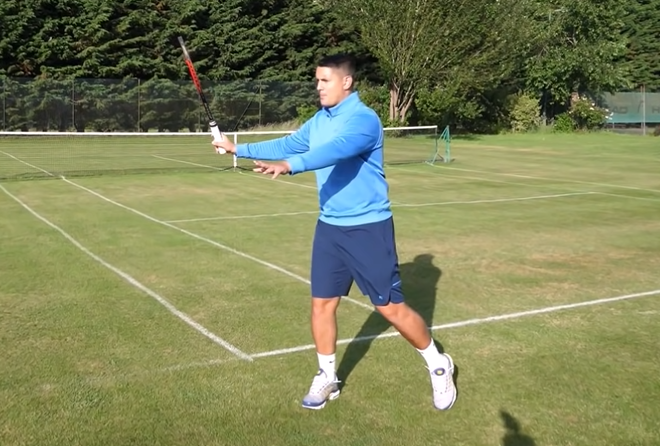
The forehand is the most important shot in tennis, after the serve and return. Around 75% of all winners from the baseline, on the ATP tour, are hit with a forehand.
That’s why it’s so important to build a reliable and consistent forehand in tennis, one that will allow you to construct points and hit winners when the time is right.
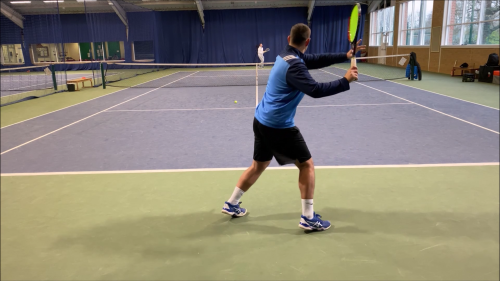
Very often, tennis players get confused when it comes to the technique on the forehand.
After all, there is a lot to think about and master. There is the various grips, the different forehand stances and the numerous ways you can swing.
All of these elements contribute massively to the forehand,
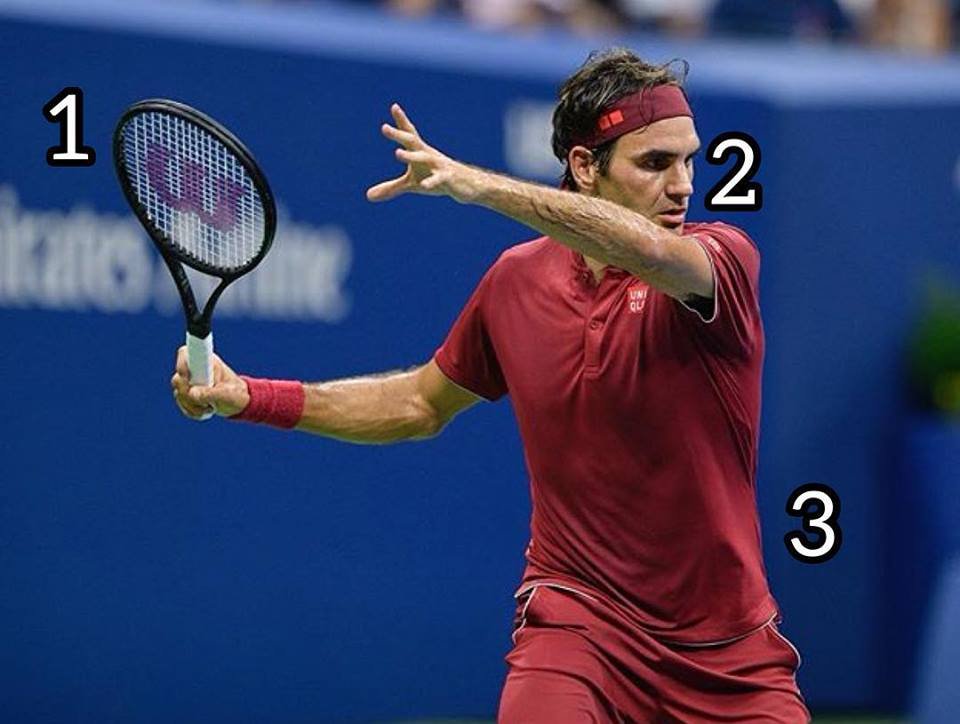
There are three main forehand grips in tennis. These are the eastern forehand grip, the semi-western forehand grip and the western forehand grip.
Each grip has it’s own pros and cons, and will suit a certain style of player.

The eastern forehand grip is the grip of choice for Roger Federer and a few other ATP players.
To find this grip, place your heel pad and the base of your index knuckle on bevel 3.
The eastern forehand grip is very good for hitting flatter forehands, or extending towards the target for longer as it allows the player to make contact in many different locations during the contact zone.
This grip works well for dealing with lower bouncing balls, and waist height balls.
It doesn’t work as well on higher balls and many players struggle to generate topspin with the eastern forehand grip.
This grip is suited to players who like to attack, possibly an all court style of player who likes to approach the net and finish points off with a volley.

Notice that Milos Raonic really spreads his index finger out, along the grip.
This may be too excessive for your own serve, but spreading the index finger will allow you to maneuver and control the racket much easier.
Experiment with the fingers and you’ll soon see what works best for your own tennis serve.
The next step to creating a reliable tennis serve is having a good ball toss.
The ball toss is possibly the biggest problem for most tennis players when it comes to their serve.
A wild toss will make serving extremely difficult as you’ll have to constantly adapt to new locations.
The best tennis serve ball tosses go no higher than six inches above the contact point.
The higher you toss the ball, the faster it will be traveling downwards when you try to make contact.
This makes it harder to hit the sweet spot on your tennis racket. When you toss the ball on the serve, the ball travels up, hits the peak, and then travels down.

The closer you can make contact to the apex of the ball toss, the easier it will be for you to time the serve properly.
The best servers also know the importance of serve disguise.
Much like when hitting a drop shot, a lot of the shots success will depend on the disguise factor.
If you toss the ball up very high, not only does it ruin your timing but it also gives the opponent lots of time to pick up on slight differences and make your serve much easier to read.
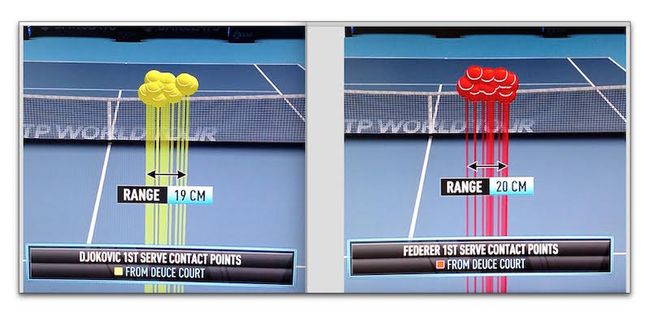
As you can see from the above image, Novak Djokovic and Roger Federer both have a very consistent ball toss, in the same zone time and time again.
The key to having a consistent ball toss on your tennis serve starts with how you hold the ball.
One of the biggest reasons that players struggle to toss correctly is that they hold the ball in the palm of their hand and it rolls off as they release.
Another major issue is players releasing the ball too early. often by flexing at the elbow.
The remedy – hold the tennis ball comfortably in your fingers, aim to release the ball around head height and keep your arm extended throughout.
What is the trophy position on the tennis serve?
Imagine you wanted to throw a ball a big distance, you’d bend your throwing arm to around a 90 degree angle, and point the non throwing arm towards your target.
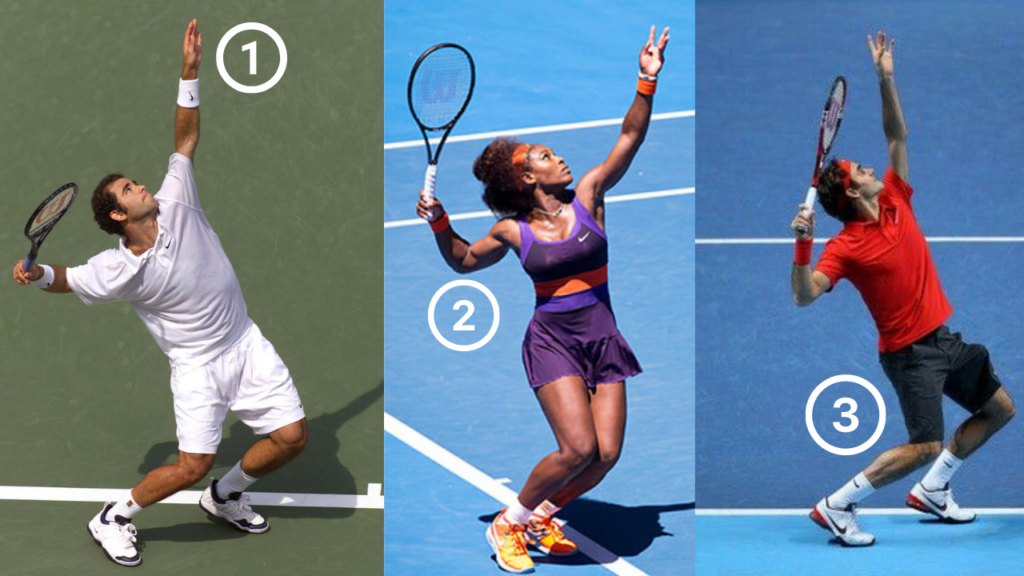
A good trophy position is very similar to a good throwing position, the main difference is the tilt of the shoulders.
On serve, the target is the contact point, whereas with a throw it might be simply forward.
The characteristics of a good tennis serve trophy pose include:
– The non hitting hand pointing upwards to the ball to help balance the body
– The hitting arm at around a 90 degree angle and the tip of the racket pointing upwards towards the sky.
– If you can, a good knee bend in this position would also help greatly.
What is supination and pronation on the tennis serve?
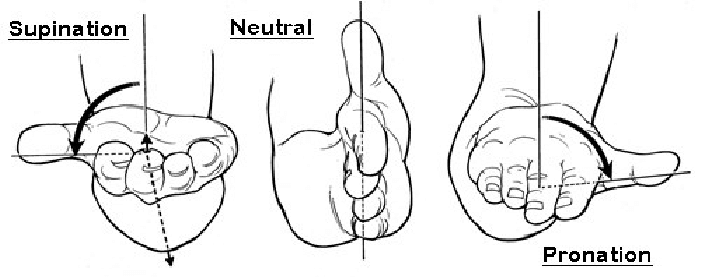
Prior to contact, you want to achieve a position where the forearm is supinated and the racket is traveling towards the ball on edge.
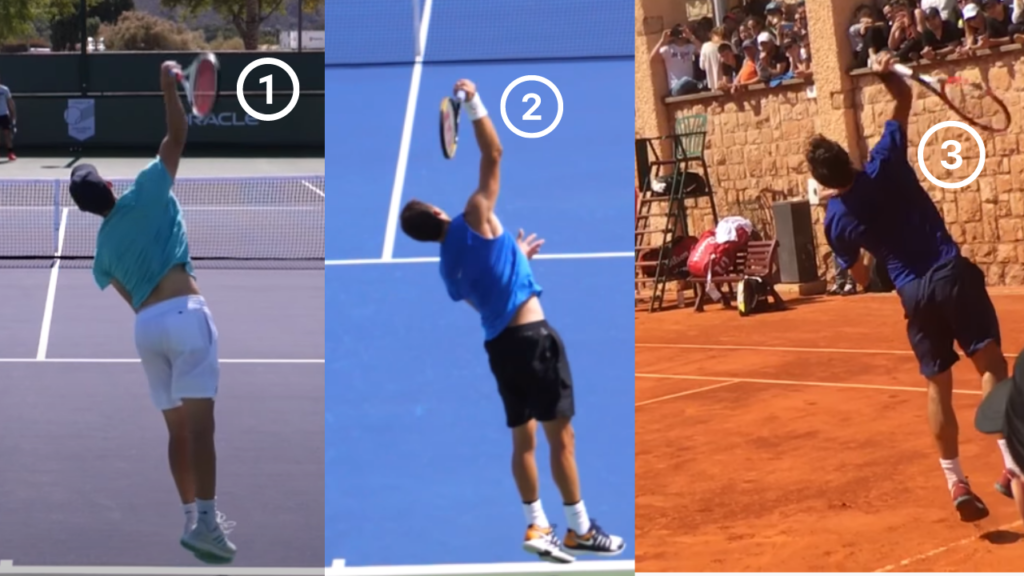
By using the continental grip you allow the forearm, arm and shoulder to supinate prior to contact.
In this position, it can look as though the player will hit the ball with the side of their tennis racket but the arm starts to pronate as the racket travels up to the ball.
Here, the side of the strings you’ll hit the ball with and the palm of the hand will be facing the left side of the court.
From the supinated position, the arm, especially the forearm, starts to pronate.
The palm will now turn from facing the left side of the court towards facing down the court, towards the target.
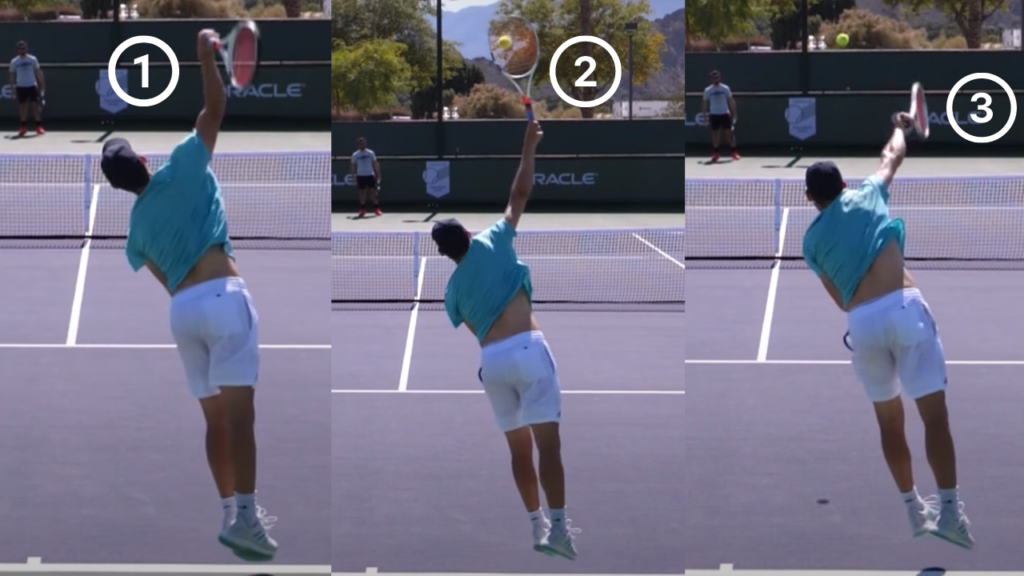
As you make contact on the tennis serve, the forearm has already pronated but not fully.
Full pronation occurs just after contact, when the palm will turn towards the right side of the court.
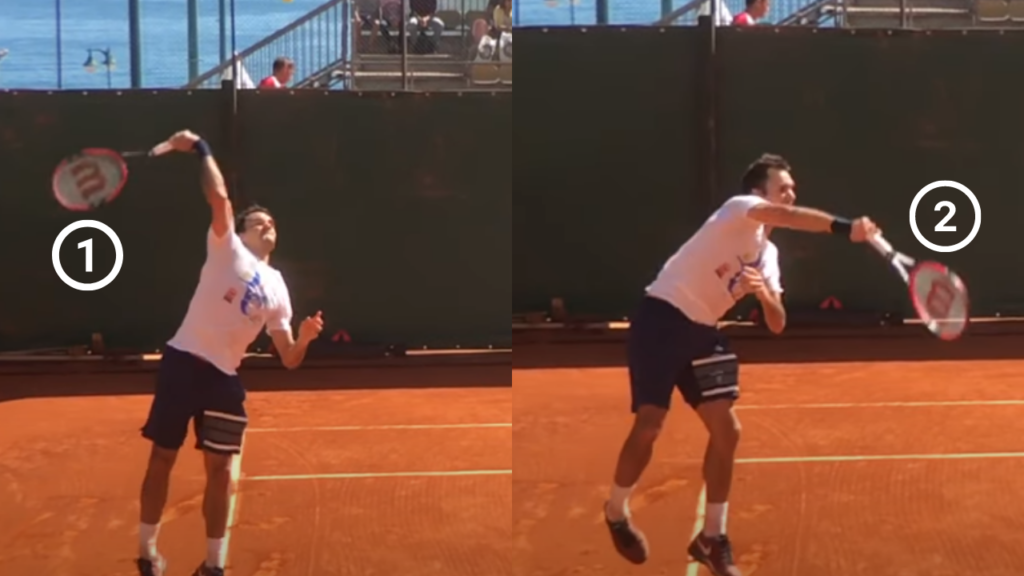
By using forearm supination and pronation, you’ll be able to easily change the direction of your serves by manipulating the strings slightly.
This is the ideal way to accelerate the tennis racket head during the contact zone.
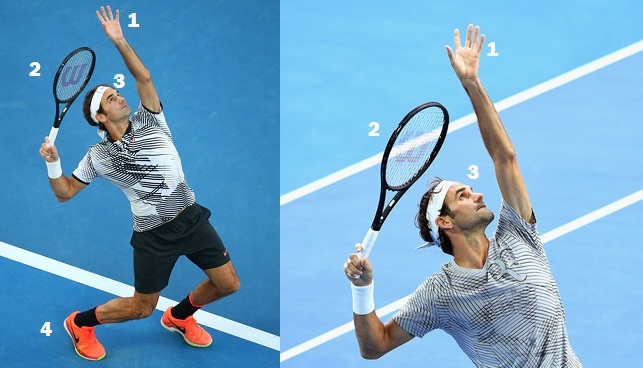
The last step in hitting a good tennis serve is the follow-through and finish.
Often, tennis players will injure themselves by using an incorrect follow through that stresses the shoulder, elbow or wrist.
Ideally, after full pronation has occured, you’ll start to bend the elbow and the racket and hand will finish around your left pocket.
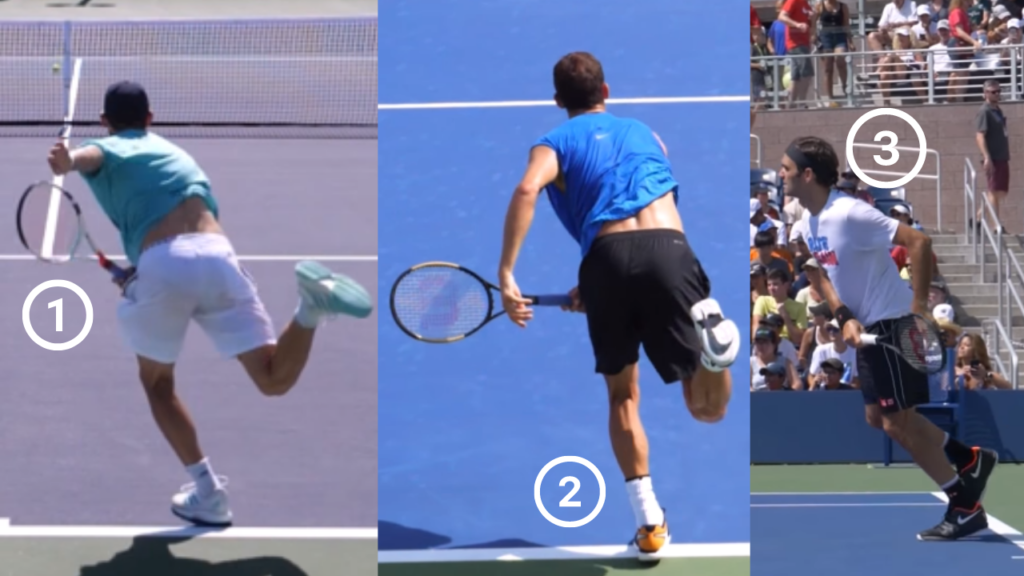
This will allow the shoulder muscles to slow down in a natural and relaxed way without stressing the shoulder or elbow joint.
Try to focus on three main points when you finish the serve:
– Arm stays loose
– Land inside the court unless going for a kick serve
– Head stays up, with the eyes tracking the ball.
If you’ve enjoyed this tennis serve lesson and want more help, make sure to download our FREE serve guide below
